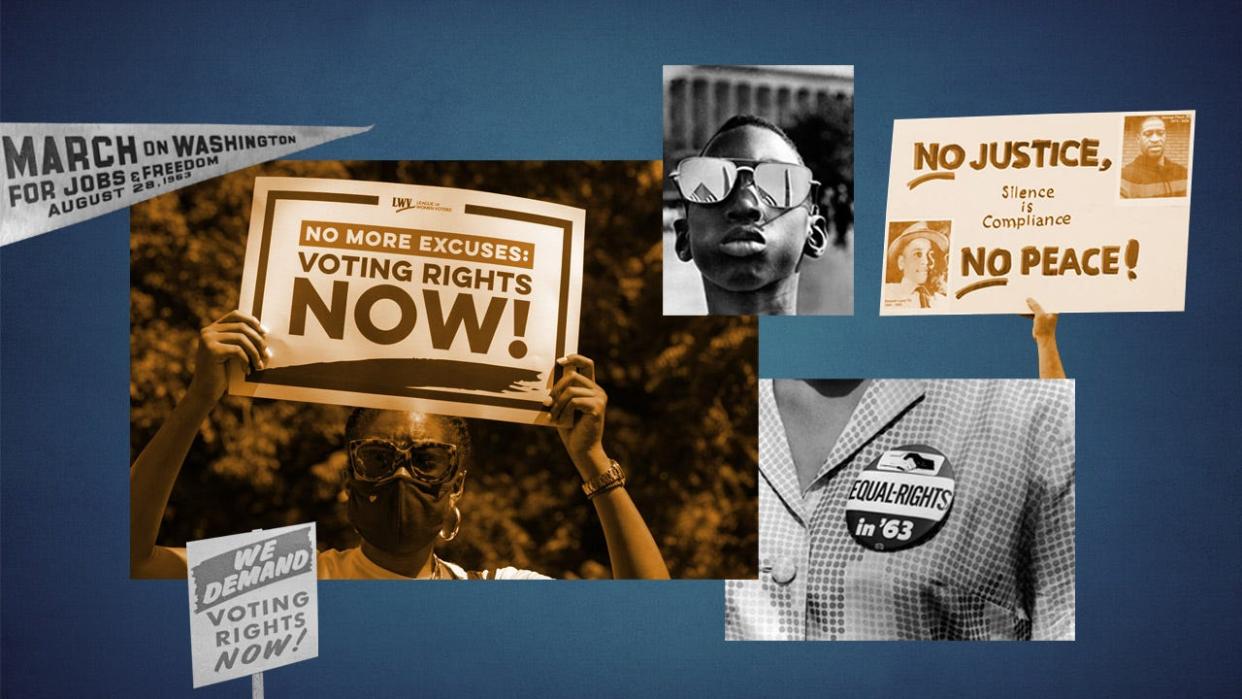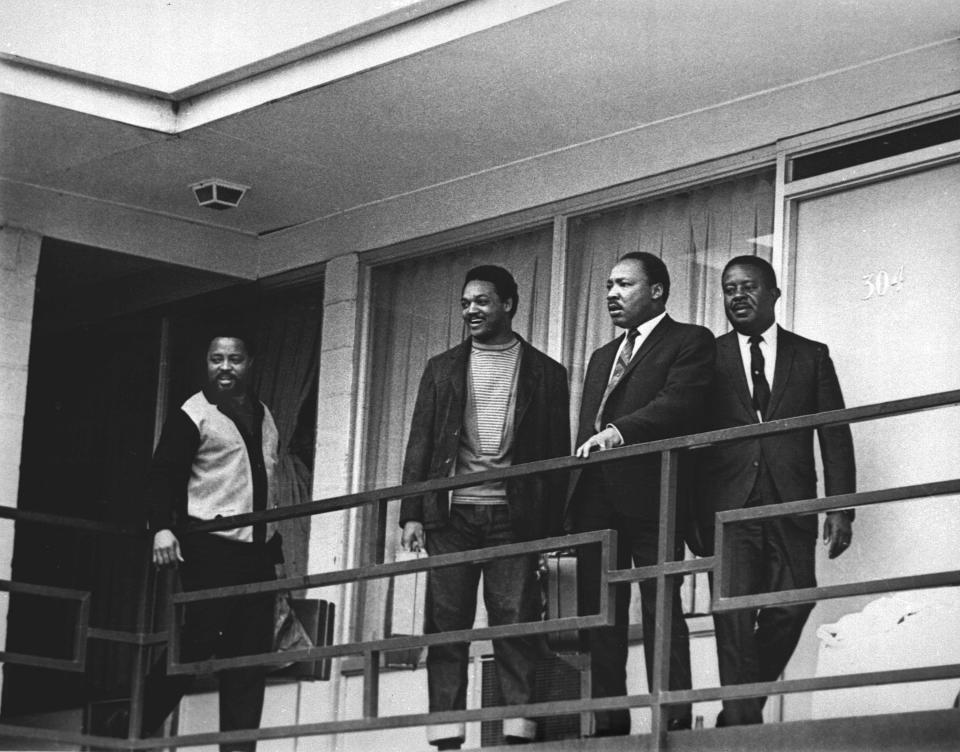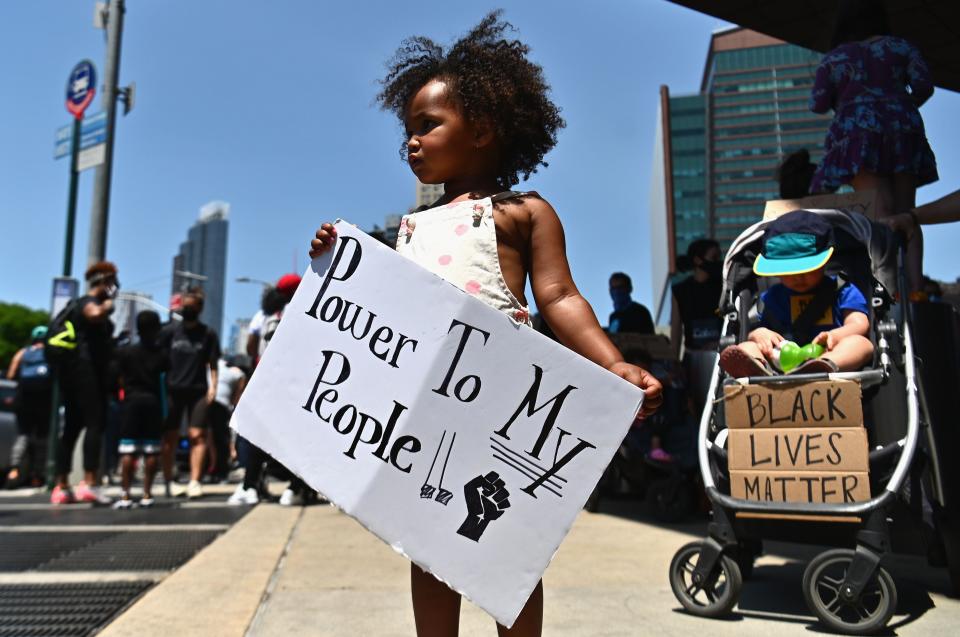Martin Luther King Jr’s ‘I Have a Dream’ speech turns 60 as fresh civil rights battles emerge

- Oops!Something went wrong.Please try again later.
Sixty years have passed since Martin Luther King Jr. delivered his momentous “I Have a Dream” address during the landmark 1963 March on Washington for Jobs and Freedom. While the event has come to be linked with the causes of desegregation and voting rights, it sought to highlight an array of racial and economic injustices, many of which still resonate today – in education, housing and criminal justice reform.
So how does today’s movement differ from its predecessor? First of all, in name: Julie Buckner Armstrong, an English professor at the University of South Florida in Tampa who has written several books about the Civil Rights Movement, said it’s not fair to use the same term to describe today's efforts.
“Doing so minimizes the distinctiveness of what happened during the 1950s and 1960s,” Armstrong said.

Adriane Lentz-Smith, an associate professor of history at Duke University in Durham, North Carolina, said the contemporary movement is both a continuation of and heir to previous struggles. While many issues remain the same, she said, today’s activists face a political mainstream that not only has shifted significantly to the right but that “no longer has competition with the Soviet Union pressuring it to make good on the promise of democracy.”
“Activists have drawn on and refined organizational models from the past, just as white supremacy has retooled to mask racialized power in colorblind language,” Lentz-Smith said.
Armstrong compared today's specter of white supremacy to the mythical Hydra, whose heads, when cut off, grow two more in one’s place.
“Just as white supremacy evolves over time,” she said, “the fight must adapt and change. ... That Hydra is behind the rise of mass incarceration disproportionately targeting Black and brown men, and it’s behind efforts to prevent educators from talking about diversity, equity, inclusion and even racism itself.”
Explore the series: MLK’s ‘I have a dream’ speech looms large 60 years later
A movement shaped, inspired by its predecessor
Emilye Crosby, a professor of history at the State University of New York College at Geneseo, said that while some might disagree about whether today’s efforts continue or are distinct from the civil rights era, “what’s going on today is definitely part of that larger Black freedom struggle,” she said “Some people are inspired by it. Some are using similar tactics. Some are still taking on unfinished issues. There are lots of continuities.”

The earlier movement is often perceived as more defined and centered largely in the South – in contrast with today’s Black Lives Matter movement, which drew criticism for lacking coherence with its nationwide chapters focused on their own priorities. But the efforts of the 1950s and 1960s were just as nuanced as today's, she said, differing in places such as Birmingham, Detroit, New York and Los Angeles.
“There’s a tendency in the present to smooth over complications of the past,” Armstrong said. “We don’t see that back then was just as messy as now.”
What are the central issues of today's movement?
Experts cited several key issues for today’s movement and some of the people and organizations leading the fight:
Voting rights. The Voting Rights Act of 1965 has really been undermined, and there’s just widespread voter suppression,” Crosby said. She cited Stacey Abrams, the two-time Georgia gubernatorial nominee who earned a national spotlight for her efforts to protect voting rights and promote voter participation in her home state. Those efforts continue through the organizations she founded, Fair Fight Action and the New Georgia Project, the latter now headed by political strategist Kendra Davenport Cotton.
Criminal justice reform. Buckner noted the Equal Justice Initiative, a nonprofit based in Montgomery, Alabama, that represents prisoners who may have been wrongly convicted of crimes or who can’t afford worthy representation.
Economic equality. Crosby pointed to the Poor People’s Campaign, a project conceived by King to combat poverty through housing and income. Though the original effort withered after King’s assassination, it was revived by William Barber II of North Carolina, whose work with co-chair Liz Theoharis differs from its predecessor because of the availability of data and the power of social media to motivate action.
Education. Buckner highlighted two organizations: Learning for Justice, a project of the Southern Poverty Law Center that fights white supremacy by providing classroom instructors with education materials; and the Institute for Common Power, which views education as a means of achieving voting equity.
Social justice. Armstrong and Crosby cite the Movement for Black Lives, a coalition of more than 50 groups representing the interests of Black communities around the United States, and youth-based groups such as Dream Defenders and BYP100, which also fight for social justice.
The rise of grassroots influence
One major difference between today’s struggle and that of the past is that today's movement isn’t galvanized around a specific figurehead.
“I don’t think there is a leader today who’s comparable to Dr. King,” Crosby said. “But I don’t think that’s a negative. ... Part of what’s exciting about the current movement is that there are lot of groups and people on the local level. There’s not one overarching organization.”
Lentz-Smith said that while 1960s media too often focused on King as the face of the movement, “grassroots activists and organizations like CORE and SNCC understood that the goal was to nurture leadership in everyday people who could articulate their own political visions.”
Today’s organizations and leaders, on a national and local scale, “speak to the success of the civil rights movement’s ethos, not a dilution of it,” she said.
This article originally appeared on USA TODAY: Civil rights movement of today honors rich history, faces new battles

